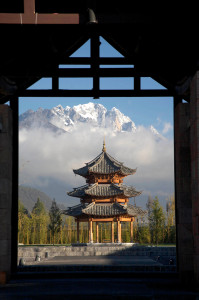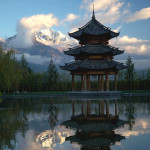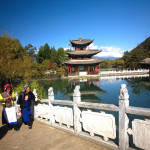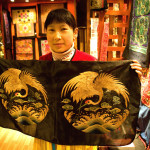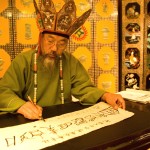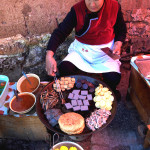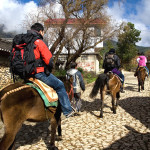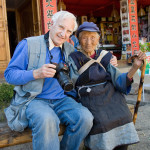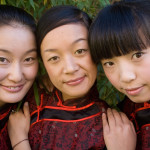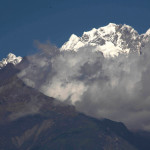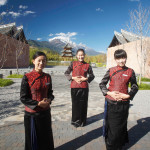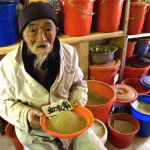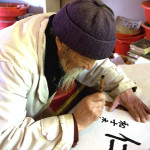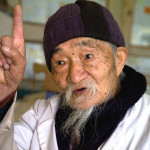The True Shangri-la Discovered in Remote China
Story and photography by Dave Bartruff
“Very well, then, we’ll be off to Shangri-La. Wherever and whatever it is, we’ll try it.” – Lost Horizon by James Hilton 1933
Lijiang, China: Countless readers of the classic adventure novel by the British writer James Hilton have long been fascinated by the concept of some far off utopia of contentment; a paradise far removed from the cares and struggles of the real world of the here and now.
I was one of those readers, but as most, dismissed the idea of actually ever finding any such place. It was, after all, just make-believe.
But then, the opportunity to travel to China presented itself. And I discovered one of my destinations was Lijiang, the ancient spiritual capital of its ethnic Naxi inhabitants. Located in remote Yunnan Provence in southwest China, it faces mystical Tibet in the foothills of the great Himalayan Mountains.
Again I read in the pages of Lost Horizon: “But it was to the head of the valley that his eyes were led irresistibly, for there, soaring into the gap, and magnificent in the full shimmer of moonlight, appeared what he took to be the loveliest mountain on earth. It was so radiant, so serenely poised that he wondered for a moment if it were real at all.”
That, of course, was fiction but yet I still hoped to see if there wasn’t at least some glimmer of reality in the place that Hilton called, “ Shangri-La” when I reached remote Lijiang.
Centuries ago, nomadic Tibetan tribes settled here, and to this day have maintained their intrinsic customs, language and dress.
Arising before the sun my first morning in Lijiang, I witnessed dawn’s first light gently illuminate the jagged peaks of Jade Dragon Snow Mountain one by one. As with the character in Hilton’s novel, my first glimpse of Lijiang proved that there was a real Shangri-La after all.
Lijiang was designated a UNESCO World Heritage Site in 1999 and its Old Town, or Dayan, dates back more than 500 years. It is a labyrinth of classic tile-roofed row houses, shops and cafes along narrow cobbled streets bereft of vehicular traffic. My exploration of the town first took me to the Dongba Research Institute. Here the Naxi religion (called Dongba) and its art crafts are displayed while artisans and crafts people work in age-old ways and dress.
From a brush painter copying classic Dongba scrolls, I learned that Naxi is the only remaining world language that is written in pictographs instead of alphabets or characters.
Further wandering took me to the Black Dragon Pool at the center of the town’s Jade Spring Park. Here many exquisite antique Naxi-style architectural treasures take the form of pagodas and pavilions. While in the distance, adding further drama to the postcard scene: the backdrop of Jade Dragon Snow Mountain.
Outside of town I explored the tranquil valley settlement of Nguluko. Here, long ago, another seeker of his own Shangri-La arrived from afar and settled in 1922. It was the eccentric Austrian-born linguist, anthropologist, botanist and photographer, Joseph Rock. Rock lived out his dream here and by the time he departed in 1949, he had compiled the first dictionary of the Naxi culture. And he led the first field expeditions into the Himalayas for the National Geographic Society that departed only after his own portable bathtub and gold dinner service and other eccentricities were fully accounted for and secured on the backs of his expedition porters.
My last day in the Valley of Dragon Snow Mountain concluded with a visit to Baisha Village, the old capital of the Naxi Kingdom until AD 1271. By no means did it look like a place of importance any more. Its narrow dusty lanes were nearly deserted. But under the branches of a weeping willow tree growing in front of a ubiquitous shop front, I spotted a hand-drawn sign that read in English, “The Most Admired Man.”
I slid open the entrance door and there to greet me with a handshake and a cheery “Welcome” in English was a slight, white-bearded Naxi elder. He apologized for his “poor English” (although I considered it quite refined). He said he learned it during WWII from American airmen of the famed “Flying Tigers” based in Lijiang when he was a teen.
He wore a black wool stocking cap like sailors do when out on deck on a stormy sea and a white lab coat. He introduced himself as Dr. Ho Shi-Xiu, age 85, a native of Lijiang and a physician. He said this was his Jade Dragon Snow Mountain Chinese Herbal Medical Clinic.
The kindly Dr. Ho had tea served, and then spoke of his background: suffering from a complicated ailment after graduating from Nanjing University and finding no cure for it with Western medicine. Returning home he delved into the study of Chinese medicinal herbs. He not only cured himself, he said, but treated others with his natural remedies free of charge if need be.
Through the years, nearly a third of a million patients from more than 100 countries have sought his medical advice. Even famed medical institutions like the Mayo Clinic consult with him today about his successful treatment of leukemia using medicinal herbs.
As I was to depart, Dr. Ho took his calligraphy brush and with four bold strokes created a single Chinese character on parchment paper that he gave to me as a remembrance of our visit. I asked its meaning. With a warm smile, he said, “Kindness, my best prescription for good health.”
With Dr. Ho’s parting benediction I felt assured I had found exactly what I was searching for in the faraway “Shangri-La” of my dreams. Not perpetual youth nor profound wisdom, but a true sense of peace and a new commitment to being more of a blessing to others.
- Pagoda and mountains reflected in Lijiang pond
- Naxi Dongba religious proselytes
- Marble bridge over Lijiang’s Black Dragon Pool
- Naxi-style embroidery at Lijiang museum
- Classic Naxi calligrapher and pictogram scholar
- Sidewalk chef in historic Old Town Lijiang
- Travelers on horseback to countryside
- East-West seniors: instant friends!
- Naxi elder in badger-fur head dress
- “Best Friends” reception trio at Lijiang resort
- Unique heart-shaped autumn leaves
- Sidewalk chef in historic Old Town Lijiang
- Friendly Naxi matriarch
- Morning light on peaks above Lijiang
- Warm welcome to Lijiang resort
- Legendary Dr. Ho displays his medicinal herbs
- Doctor Ho writes a calligraphy prescription
- Dr. Ho interprets it with vigor: “Kindness!”

